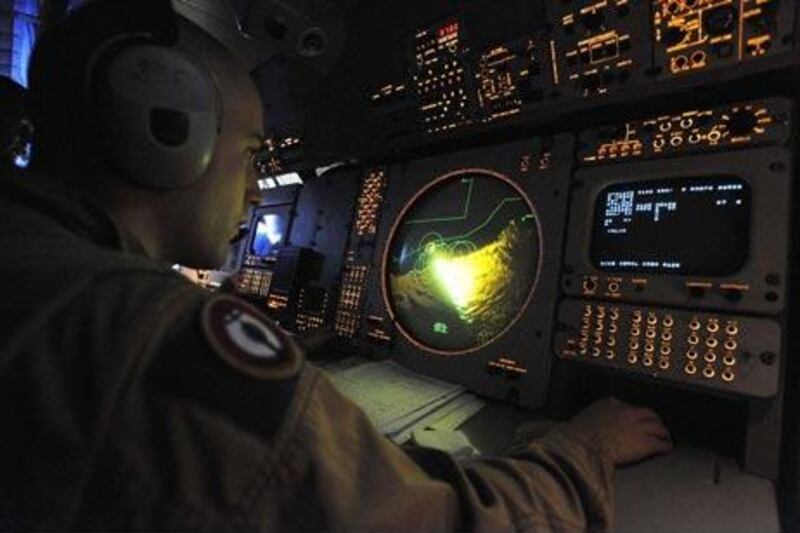An aeroplane seat, a fuel slick and pieces of white debris scattered over three miles of open ocean marked the site in the mid-Atlantic on Tuesday where Air France Flight 447 crashed, Brazil's defence minister said. Brazilian military pilots spotted the wreckage bobbing on waves, in the ocean 640 kilometres north-east of these islands off Brazil's coast. The plane carrying 228 people vanished Sunday about four hours into its flight from Rio de Janeiro to Paris.
"I can confirm that the five kilometres of debris are those of the Air France plane," defence minister Nelson Jobim told reporters at a hushed news conference in Rio. He said no bodies had been found and there was no sign of life. The effort to recover the debris and locate the all-important black box recorders, which emit signals for only 30 days, is expected to be exceedingly challenging. "We are in a race against the clock in extremely difficult weather conditions and in a zone where depths reach up to 7,000 meters," French prime minister Francois Fillon told lawmakers in parliament Tuesday.
Brazilian military pilots first spotted the floating debris early Tuesday in two areas about 60 kilometres apart, said Air Force spokesman Jorge Amaral. The area is not far off the flight path of Flight 447. Mr Jobim said the main debris field was found near where the initial signs were spotted. The cause of the crash will not be known until the black boxes are recovered - which could take days or weeks.
But weather and aviation experts are focusing on the possibility of a collision with a brutal storm that sent winds of 160 kph straight into the airliner's path. "The aeroplane was flying at 800 kph north-east and the air is coming at them at 100mph," said AccuWeather.com senior meteorologist Henry Margusity. "That probably started the process that ended up in some catastrophic failure of the aeroplane."
Towering Atlantic storms are common this time of year near the equator - an area known as the intertropical convergence zone. "That's where the north-east trade winds meet the south-east trade winds - it's the meeting place of the southern hemisphere and the northern hemisphere's weather," Mr Margusity said. But several veteran pilots of big airliners said it was extremely unlikely that Flight 447's crew intended to punch through a potentially deadly storm.
"Nobody in their right mind would ever go through a thunderstorm," said Tim Meldahl, a captain for a major US airline who has flown internationally for 26 years, including more than 3,000 hours on the same A330 aeroplane. Pilots often work their way through bands of storms, watching for lightning flashing through clouds ahead and manoeuvring around them, he said. "They may have been sitting there thinking we can weave our way through this stuff."
"If they were trying to lace their way in and out of these things, they could have been caught by an updraft." The same violent weather that might have led to the crash also could impede recovery efforts. "Anyone who is going there to try to salvage this aeroplane within the next couple of months will have to deal with these big thunderstorms coming through on an almost daily basis," Mr Margusity said.
"You're talking about a monumental salvage effort." Remotely controlled submersible crafts will have to be used to recover wreckage settling so far beneath the ocean's surface. France dispatched a research ship equipped with unmanned submarines that can explore as deeply as 6,000 meters. * AP






